Playing solo piano is the type of thing that may literally make you want to go into Crate & Barrel with a baseball bat and smash everything to bits. (Don’t tell me you’ve never thought of doing that.) Well maybe not, but still you get the idea. IT’S FRUSTRATING! How do I know? Because I’ve been there. Thank goodness, I’ve made some progress over my career, and feel relatively comfortable at this point, but still. Bill Evans was once asked by Marian McPartland what he could work on more…this was later in his career when he had already recorded his solo piano albums by the way…and he responded with…wait for it…can you guess… that’s right…SOLO FREAKING PIANO.
Uhhh excuse me?! You’re the great Bill Evans and even you’re saying you need to work on Solo Piano more?!! Give me a break! But it definitely goes to show that it is not easy. That is why we’re releasing our very first specialty course here at JPS on…yup you guessed it…Solo Piano.
Click below to get the “7 Step Arranging Process” Lesson video and flowchart that shows you how to create two handed arrangements for any standard, without guessing or frustration, while creating rich lush beautiful jazz chords. Plus will send you all the information on what the “JPS Solo Piano System” contains and all the fun details.
Now…off to the 9 steps, (in no particular order) to improve your solo piano playing…
#1 – Make sure you THOROUGHLY learn the tune
Now hold on for just one sec…you may be saying…”I’m reading this blog post on how to improve my solo piano, and Brenden is telling me to thoroughly learn tunes?!” Yes…Yes I am…
You’d be surprised at how much a student knows and still cannot play solo piano to save their life. They’ve practice all their chords. They know voicings, their technique is good, their LH has supporting motions down, yet when it comes to playing an actual standard…nothing comes together.
I’d say 99% of people who think they “KNOW” a tune…actually do not know a tune. Make sure you memorize the tune. Be able to play the melody alone in your RH all different tempos and styles. Be able to play all you LH bass notes alone at all different tempos and styles. Be able to play all the chords in the tune in your LH and RH alone. Be able to play bass notes in your LH while playing chords in your RH. Be able to play the melody in your RH and LH bass notes in your LH. The list goes on and on. You need to know this tune like you know how to brush your teeth, like you know how to scramble eggs, like you know how to walk.
Knowing a tune this well is the only way that will allow your piano knowledge to come through while playing solo piano. Otherwise you spend your time stumbling trying to play the melody, trying to play the chords, trying to play bass notes, and you never give yourself the opportunity to actually express yourself through the music.
#2 -The Foundation For Solo Piano = Bass Notes To Shells or Chord in LH with Melody In RH
The barebones of solo can be described in the heading of this step. If you can play through a tune while using this style you’re well on your way to playing amazing solo piano. The greatest solo piano players contain certain elements. A very active LH for one, (Art Tatum, Bill Evans, Erroll Garner), and the RH melody that is available for harmonization underneath the melody that joins their LH. In order to start working towards this foundation you have to improve your LH jumps from bass note to shells or bass note to chord. This will instantly allow you to take on more responsibility with your LH and free your RH to harmonize with the melody to create a rich and full arrangement of the tune.
  With these 3 components we essentially have everything we need to play solo piano. We can create some powerful music with these three components believe it or not. The shells will be EXTREMELY important in faster tunes. In fast tunes we do not have time to harmonize as much so we have to rely on playing the shells more to ensure we reflect the quality of the harmonies while the tempo is going by. If your shells aren’t up to speed…unfortunately you have no chance of pulling solo piano off.
  We use these 3 components by alternating between bass notes and shells in your LH. By playing both of these components you’re covering both the bottom end of the foundation and the harmonies that contain the chord quality. There are a couple of rhythmic ideas that will help, but will talk about that later.
Check out how the LH in this transcription holds down both the bass, harmonies and rhythms by using just bass note to shells while the RH plays the melody to “All Of Me”
(See an example of this from “All Of Me” below.)

#3 – Work on LH Bass Motion, Movements, and support
Like I just mentioned, one of the key components we always need are bass notes. One of the first things we notice in students is the lack of low end bass notes to hold everything together. You need to think about bass notes as the foundation to the tune. Without them everything crumbles. You must balance create an equal balance between bass notes and shells.
Bass notes provide a nice rich and lush bottom end to your playing and to the harmonies. Some people choose to just walk bass in their LH while playing the melody and improvising. This sounds good but unfortunately doesn’t provide the shells in your playing, so you miss out on the harmonies of the tune.
You have to work on developing your LH to be able to do a number of different things listed below.
1. Full Quarter Note Walking Bass

2. 2 Feel

3. Provide counter bass motion lines
4. Provide stabs & quick movements.

4. Make quick jumps to shells & chords.

5. Be flexible to move or jump with far spreads such as octaves, 9ths, and tenths.
By working on these components you will give yourself the potential to open up your playing to new ideas, movements, and sounds, rather then just walking bass all the time or simply playing root position chords & inversions.
#4 – Know your shells inside and out
As we learned in Step #2, when playing solo piano we need 3 components to build the foundation and structure to our tune.
#1 – Bass Notes
#2 – Shells (the 3rd & 7th of the chord)
#3 – The Melody
One of the main components listed here is shells. Now if we’re unable to jump to our shells with ease, then there is no way we can even begin to lay down a foundation for solo piano. This is why it’s so important that we learn the shells of all chords with our LH like riding a bike.
As we go to play bass note to shells we shouldn’t even have to think about where our LH is going when jumping to the shells. The shells will be the essence of the harmony and will give all your chords the necessary quality.
We recommend practicing your shells in all keys, with RH alone and LH alone. Then adding the bass note to shells jump in systematically through the keys and all chord qualities. Finally, practicing bass note to shells in a 2-5-1 format as shown below.
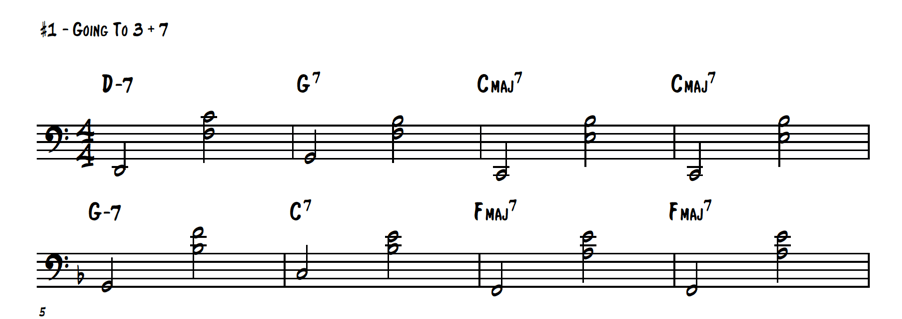
#5 – RH Harmonizations
As I left off the last step I spoke of providing rich and lush harmonizations. I was working on solo piano with a student the other day and played some Benny Green tracks for him. While listening he uttered a comment in disblief, “It sounds like he has 4 hands!” So many people think this when they hear players such as Tatum or Oscar Peterson.
In order to get this sound you MUST be harmonizing underneath your melody. There are number of different ways to do this that are explained in the “Solo Piano System”.
One of the easiest ways to start harmonizing is to simply place the shells of the chord below the melody in your RH while your LH plays bass notes. This will instantly create a lush solo piano sound. Check out the first measure of “All The Things You Are”
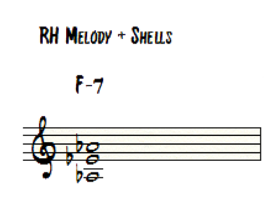
This process takes on more steps that involve adding non shell notes, where to to place your LH shells, and how to add extensions for color and that jazz sound we’re all striving for.
One of the best lessons in the “Solo Piano System” explains the 7 Step Arranging Process to arrange your hands to create these rich, balanced voicings. Click below to get it.
Check out the different between “My Romance” without RH harmonizations and with RH harmonizations.
#6 – You must have components to hold the tempo of the tune.
There are many different ways to hold the tempo to a tune. It’s essential that this happens. Without it the tune will feel dead, bland, and boring. These tempo holding methods help to provide the “feeling” of swing and joy that tempo gives us. Remember, tempo and rhythm is a lot of the reason jazz was created. For dance, for joy, for movement. Without these tempo holding techniques, we lose all of the feeling out of the tune. Check out our suggestions for the different general tempos you’ll encounter.
Ballads
i. Lots of harmonization
ii. LH Tenths to Chords
iii. Bass movement
iv. Fills
v. Keeping the rhythmic foundation.
Medium Swing
i. Broken Bass with Chords or shells. Foundation Method.
ii. Tenths
iii. RH Melody LH any sort of bass strategy
iv. Little harmonization except on half notes and whole notes.
Fast Swing
i. Little to no harmonization
ii. LH does all the work.
iii. Broken stride
iv. Any bass method
v. RH melody only with no harmonization
#7 The placement of rhythms in your LH
This is a VERY, VERY fine detail that can completely change the way you sound…instantly. Seriously…no BS.
Stride, ragtime, and old style of piano playing have a light but heavy sound due to the use of the LH. Stride is mainly played on downbeats, while the RH will add some upbeat inflections. This is because while playing stride and ragtime your LH is usually going from bass note to chord on 1 & 3. Very simply put.
Now for beginners and intermediate players…most of the time this is exactly how you’re playing solo piano. As I mentioned before this style gives a heavier feel due to all of the downbeats.
The easiest and fastest way to give a more modern and uplifting feel to your playing…is to play your LH on upbeats! Start putting bass notes on upbeats. The and of 1. Start putting chords and shells on upbeats. The and of 3. Watch how it will completely change the way your playing sounds while just playing the melody in your RH. Easier said than done. 🙂
Take a look at this solo piano transcription. You’ll notice that almost the entire LH rhythms are all on upbeats.
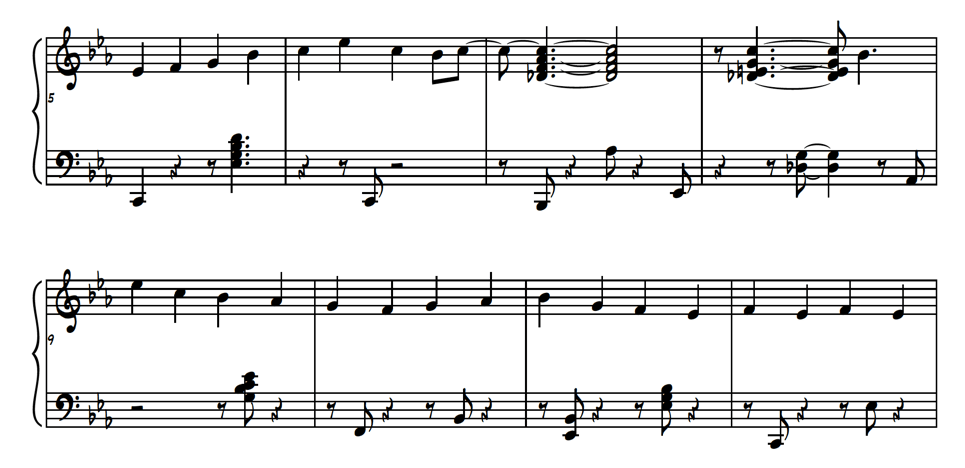
#8 – You have to be the whole band. Space Filling Methods
When playing solo piano we have to do everything. Play the melody, play the bass, be the drummer, and be the horn section of a bigband. Meaning we have to add the fills into the space between the resting melody. Just like holding the tempo of the tune, we need to comp or do SOMETHING, (not always), in that space. Most of the time. Whether it’s add a comp, resolve the harmony, play a bass note counter line, play a RH improv line, comp with both hands together, make sure you do something.
Try some of these ideas to fill in your space.
1. Comp with one hand or both hands

2. Use RH improvisation to fill space.
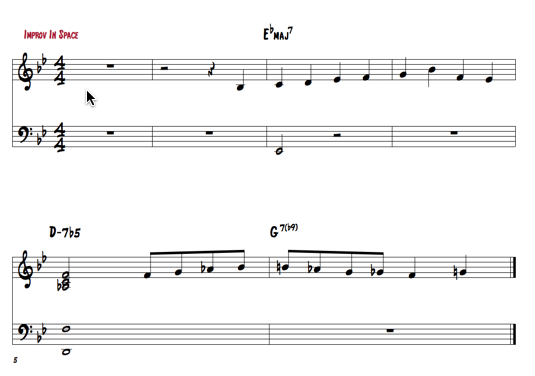
3. Use LH Bass motion
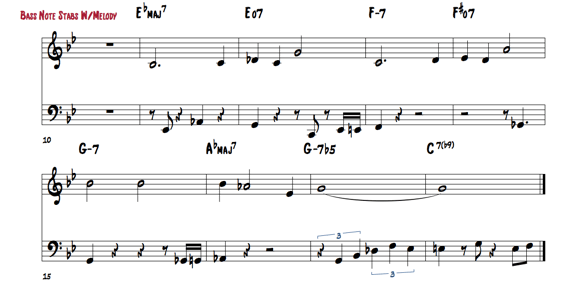
4. Passing Chord Motion

#9 Your method and approach for both hands will change for style and tempo
A lot of students don’t realize that the style and tempo of the tune, will dictate your approach and methods you use in solo piano. A ballad is going to take on a different approach, then a medium swing, or fast tempo tune. Even slight variations in style will effect your approach. Old slow swing style, walking slow swing, walking and slow swing infused. Learning the correct approach to a style is a must. When listening to a pianist play a tune solo, make a mental note of what the style and tempo is in your head, then listen hard to how they are creating that style in their playing. Are they using more LH, or RH? Is it equal? What are they doing with their LH? Is it moving? Is it stationary? Try to see if you can create the same atmosphere. The more you can use represent the feeling and tempo of the tune the better you’ll sound!
Here are some mental approaches you can apply to change the texture and atmosphere of different standard styles.
Thick & Thin Voicings
Light & Heavy Arrangements
Little space or lots of space
Floaty or edgy
Simple or Complex
Staccato Or Legato
Joyous or Somber
High or Low Registers.
Feel free to add to this with your own ideas as you practice incorporating these textures into your playing.





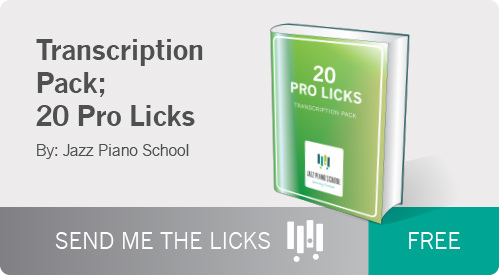

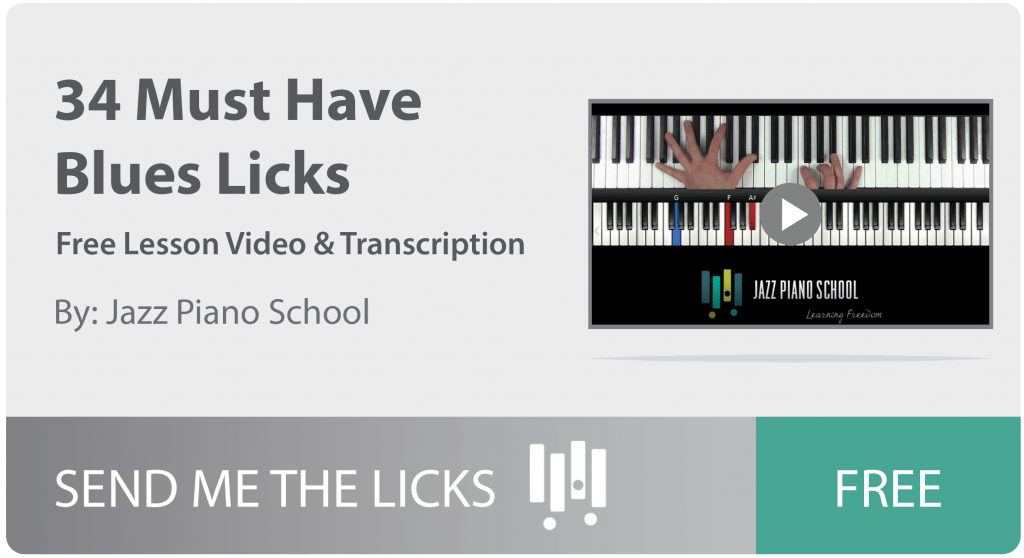



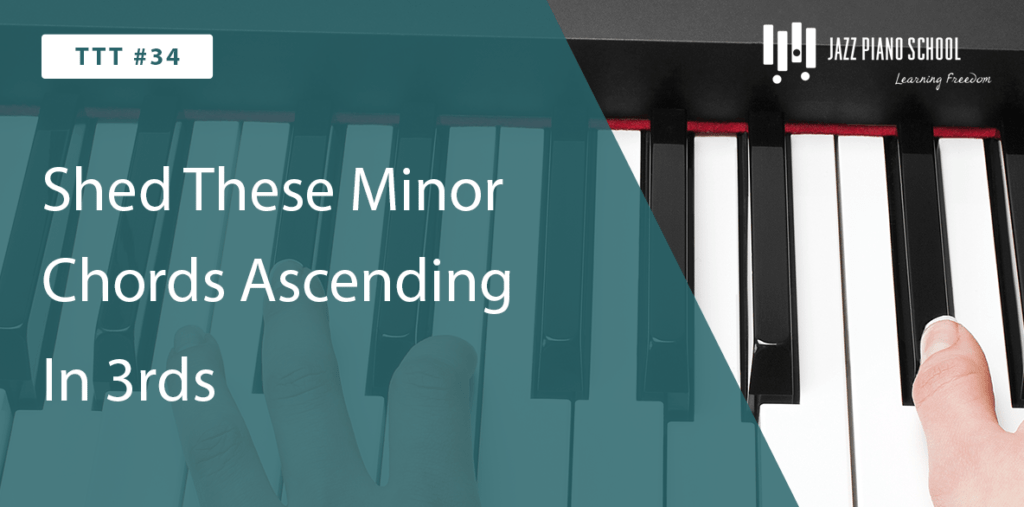

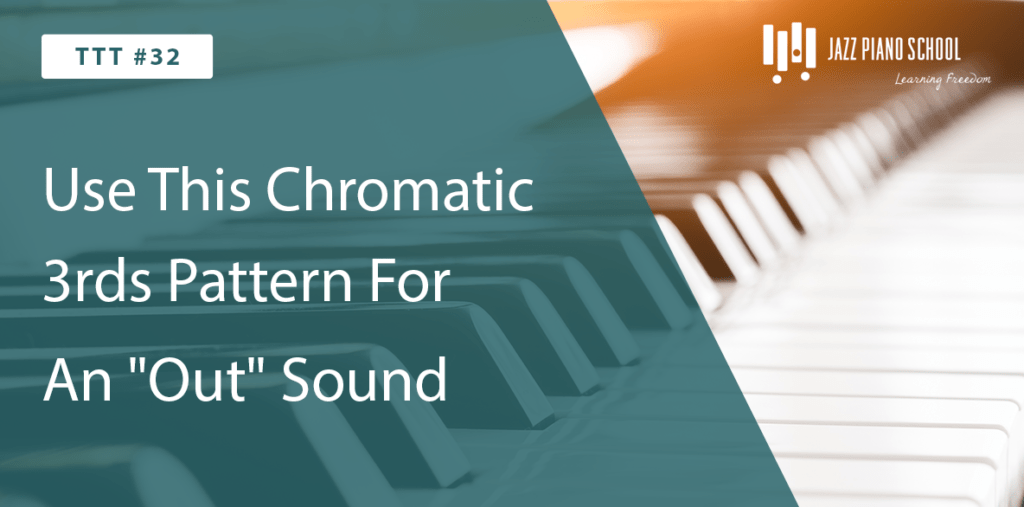


9 Responses
Excellent works!
This all makes me feel like the luckiest person in the world
Thanks Dianne! I really appreciate the support and your gratitude for my education. Thanks for leaving the comment! 🙂
Awesome!!!! !
Thanks Anne! Glad we could help!
B-)
#AWESOME
Clicking on Template Learn More goes to an error page.
Hi Paul,
Thanks for the heads up on this broken link. This has been fixed!
Thanks!